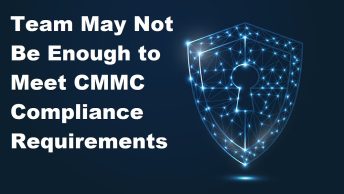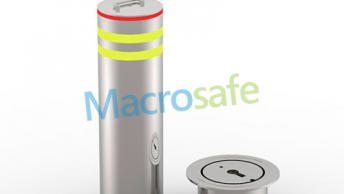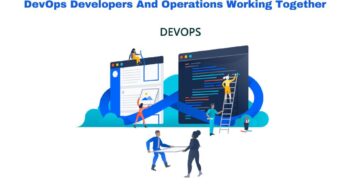Cost analysis of information technology systems
System administration is typically the most expensive aspect of a local IT support near me. Installation, updates, expansion, maintenance, support, training, and the time your personnel spends dealing with system problems are all included.
It is critical to examine total system lifecycle costs. Saving money on purchases may result in huge additional costs in the long run, whilst cutting back on services may waste a fortune in staff time or lost revenue.
Costs of first IT setup
Initial expenses may include:
- consultancy
- the cost of hardware
- License fees for software
- Work on software configuration and customization
- installation
- staff education
- supplying the required infrastructure, such as network cabling or power supply
- compliance with computer-related health and safety legislation
Costs associated with ongoing IT maintenance
Here are some examples of ongoing management costs:
- Software support contracts include fees for license renewals and upgrades.
- hardware improvements
- Memory extension, disc size growth, and communication capacity expansion are all possibilities.
- Telephone, email, online, and on-site assistance are all available.
- replacements and upkeep
- adherence to computer-related health and safety legislation
- employee education
- Consumables such as printer cartridges, ink, and paper are costly.
- Communications fees, such as phone calls, internet access, and subscriptions
It may take some time to reach an agreement on an IT budget and a contract with a vendor. Specify as much as you can about each aspect of the project. This will assist you in keeping costs under control and also identify any concerns that develop during the project.local IT support near me
There are several benefits to using IT support services.
Any business, large or little, can fail as a result of technology failure. You should think about getting some IT help to protect your systems.
At the beginning by identify the level of technical support required. This is determined by the amount of IT experience you have on staff. The importance of keeping systems running well, and the cost of a support contract.
IT support contracts and services
Here are some examples of support services that could be valuable to your business:
- Employee upskilling and training
- Remote management and monitoring enable rapid response to problems and failures.
- Phone, email, and online support are all available.
- assistance on-site
- The IT inventory and asset management
- Security management includes duties such as software patching, virus protection, and storage and backup.
The Importance of IT Support for Your Business
Fiest up all the IT systems are important to the operation of any organization. As a result, defects and issues in your IT system might pose significant challenges for your business, such as:
- data erasure
- data storage and processing
- service interruption
- business disruption
- Attacks against the internet
You have rapid access to highly specialized experience and resources when you have a dedicated IT support team in place.
Service level agreements and contracts with IT vendors
Check that the terms of your contract with your IT provider are fair to both of you. Make a written contract stating the terms of your engagement once you’ve reached an agreement.
Make certain that you understand the terms of your agreement with your supplier. Hidden charges can soon build up.
There are a few things to consider before signing an IT service contract.
Check to see if you’ll receive:
- The on-site service calls – a certain number of calls may be included or charged at a reduced rate.
- To keep your system safe, utilize preventative maintenance such as anti-virus software and firewalls.
- Check to discover whether any additional equipment or communication lines are necessary if remote monitoring and diagnostics are incorporated.
- If you require assistance over the phone, check to see if there are any limitations.
- Are any warranties included.
- Future software upgrades are free, or if you’ll have to pay a subscription or license charge.
- Software support to see if you can report problems and receive help, patches, and bug fixes.
- User training – Some providers may provide the limited amount of training in the system’s purchase price, while others may charge an additional fee.
- Manuals may be required if your provider contract is canceled.
In the realm of information technology, service level agreements (SLAs) are used (SLAs)
Create a service level agreement with the provider when obtaining IT services to spell out exactly what you want. A standard SLA should have the following components:
- Reaction times – the faster the response times, the higher the cost.
- Processes for escalation – the ability to escalate a problem’s response, such as going from off-site diagnostic to on-site assistance.
- Methods for documenting problems and their solutions, as well as keeping records for dispute resolution
- Supplier obligations, such as the provision of spare parts, the qualification of support employees, and the requirement to satisfy response times
- Customer responsibilities – your obligations, such as informing the supplier of changes that impact the scope of the contract and employee engagement with the provider.
- Agreement termination – a formal procedure for canceling a contract.
Create a positive working relationship with your IT supplier.
Maintaining a positive relationship with your IT supplier is crucial to the success of your system.
When you try to purchase the lowest IT systems and services without taking your business goals or total cost of ownership into account will almost always result in a strained relationship with your supplier. This could hurt both the system and the business.
The Advantages of a Good Supplier Relationship
Ideally, your supplier should understand your business objectives and the role of technology in achieving them. This will help you create a relationship that can supply you with a variety of benefits, such as:
- When the settlement of a problem or query promptly
- The provider can provide useful recommendations on your company’s future IT route based on their understanding of your sector and current IT breakthroughs.
- obtaining the desired business results
How to Create a Fruitful Supplier Relationship
To have a successful collaboration with an IT supplier, you must be clear from the start about what you both expect from the arrangement. Ascertain that:
- You’re both aware of what you’re getting in terms of hardware, software, and services.
- When you merely want products as cheaply as possible, your supplier will be unconcerned about whether you meet your company’s objectives.
- Certain milestones must be accomplished by specific dates that represent what your firm gets out of its IT systems – not just boxes and connections.
- How the supplier provides periodic reports on the system’s progress toward the agreed-upon business goals.
- You contact your service provider regularly to see how things are going.
- Adaptable to change, whether it be caused by new technology, the business climate, or updated organizational objectives.
- Your spouse have signed a contract outlining each party’s responsibilities as well as what should occur in the event of a disagreement or conflict.







